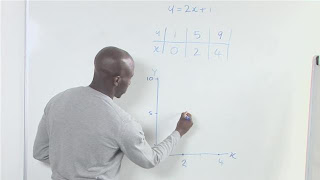Recently I sat down with my daughter Signy Gephardt, who was diagnosed with ADHD in the first grade, and who graduated from college last May. I quizzed her about “best practices” from a student’s point of view, and she shared a few ideas that all teachers may want to consider, to help the easily-distracted students in their classes.
This is Part Three of my notes from that discussion, in which Signy offered some ideas for teachers in specific disciplines.
For teachers of history, science, or other “fact-heavy” classes:
 | |
| Hands-on experiments actively engage students. |
When you have to deliver a lot of facts in a short period, however, there sometimes is no substitute for a good presentation. From the viewpoint of the more distractible students, your presentation would benefit from a PowerPoint-type display showing what the students’ class notes should say.
Fill-in-the-blanks on a PowerPoint (tap the blank and the word fills in) help keep students' wandering attention focused better than most other kinds of presentations, because there is movement right at the place where the attention should be.
Signy suggests that especially in college, teachers should post the PowerPoint they will use in class (the version with blanks not filled in) at least 24 hrs before class. Make sure everyone has time to download and/or print it beforehand. In younger classes, you probably will have to provide copies for your students. This places the organized skeleton of your presentation in their hands, and gives them a powerful focusing or place-finding aid.
It also is helpful to make sure everyone has time to keep up with note-taking. If students in your class have been helped to feel like they are on the same team, they can support each other in this effort (there is more on this point, to come in January).
Two other techniques that can be helpful: Periodically put up a relevant picture and talk about it. This gives a visual to focus on, while the students listen to you. Provide lists of terms, with definitions as needed. This places correct spellings and your favored definitions at your students' fingertips, and enables more accurate practice.
Specific Math Suggestions:
 |
| Build charts, graphs, or equations step-by-step. |
In math classes, teachers should give at-the-board demonstrations. Just as with the fill-in-the-blank PowerPoints, this places the action precisely where the attention should be focused.
Circle numbers and draw arrows—in general, do whatever is necessary, so students can not only see the process in action, but also be able to reconstruct how it was done, when they are called upon to practice the skills just demonstrated to them.
Thus, when you show them an equation, chart or graph, it is much better to create it or draw it out sequentially, rather than just show the finished thing.
The best overall class format for distractible students is 15-30 minutes of instruction, followed by a chance to immediately practice the operation and ask questions before the end of class.
 |
| Guided practice helps all students, especially distractible ones. |
The value of this approach for distractible students depends on the students' ability to be organized enough to watch the videos, read the material, etc. This is a big "if," since organization is a huge challenge for most.
But when they can do the homework, flip-flopping could work well for ADD students. If the information-delivery is well organized and the student can go back to review parts that s/he may have "spaced out" the first time, it could actually be easier for them to follow completely, than a "live performance."
This approach also allows for guided practice, and helps maximize the teacher's ability to work one-on-one with students (always a "plus" for the distractible ones). It cuts down dramatically on students practicing skills incorrectly, and hands-on practice under the active guidance of a teacher can be extremely motivating for students both to complete the work and, crucially, to turn it in (you might be amazed how difficult it is for many ADD students to remember to hand in completed work!).
Foreign language or language-arts classes:
 |
| Correcting misunderstandings at the board in Mandarin class. |
The idea is not to humiliate students--the last thing you want to do is give ADD students a reason to feel stupid (see Part II of this series). Rather, the goal is to give students a way to make sure they are all beginning the class on the “same page.”
It is particularly important for distractible students to be able to find "landmarks" that help them "keep their place," and see how a particular factoid relates to the bigger picture. When attention is snapping in and out of focus, such a structure can be extremely helpful.
Signy also suggests that language teachers should structure written vocabulary tests as word searches: find terms from the vocabulary list on the front of the page, then match them to definitions and require students to spell correctly on the back. This helps scattered minds assemble clues more reliably, so they can demonstrate what they truly have learned.
IMAGE CREDITS: The photo of the chemistry students in goggles is from the Hawaiian Mission Academy K-12 website’s Science page. The photo of a teacher (identified as "Mr. Charles") giving a step-by-step demonstration of how to graph a linear equation is from VideoJug. The image of a student teacher from University of Missouri-St. Louis guiding in-class practice work is from a page of photos from 2005. The photo of the student and teacher at the board writing Mandarin characters is from an article about Mandarin classes from the San Francisco Chronicle online.



